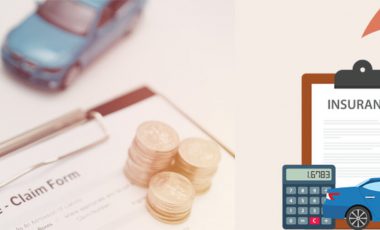Ohio Car Insurance Laws: Everything You Need to Know
Do You Know: There were more than 165 thousand accidents in Ohio in 2020 and the number is increasing rapidly. This is a huge reason why Ohio drivers are expected to provide proof of their ability to pay for any auto accident they may cause. The majority of drivers do this by purchasing auto insurance. What you need to know straight away is as follows:
Although it is not strictly necessary for drivers in Ohio to have auto insurance on their vehicles, doing so will require you to carry a certain level of protection in order to comply with the state’s financial responsibility laws.
You might be subject to a number of fines and have a large financial exposure if you cause an accident if you are found driving without insurance and in violation of Ohio’s financial responsibility .
Liability insurance requirements in Ohio
The most affordable average premiums in Ohio will be paid by motorists who buy the bare minimum of coverage. However, choosing liability-only coverage is not a suggested method for obtaining inexpensive insurance. There is no assurance that Ohio auto insurance requirements would fully cover an accident’s costs, and car accidents may be expensive.
Imagine, for instance, that you cause an accident and the other motorist is taken to the hospital with several wounds. Only $25,000 would be covered by minimum coverage insurance for medical expenses and legal fees. You would be liable for paying the additional $45,000 out of pocket if the other motorist ended up incurring medical expenses totaling $70,000.
Drivers should also be aware that the minimum auto insurance requirements in Ohio do not provide any protection for their car. Using the aforementioned scenario, you would be entirely liable for the cost of repairs if the collision caused $10,000 worth of damage to your car.
Still, wondering what are the minimum requirements for auto insurance in Ohio. Here’s a short answer:
| Coverage Type | Amount |
|---|---|
| Bodily injury per person | $25,000 |
| Bodily injury per accident | $50,000 |
| Property damage per accident | $25,000 |
Ohio Is a “Fault” State for auto accidents
When it comes to sharing financial responsibility for harm done to people or property in an automobile accident, Ohio uses a “fault” system. This implies that the motorist who caused the collision is liable for paying anyone who was injured as a consequence of the collision (although practically speaking, the at-fault driver’s insurance company would normally cover these losses, according to policy limits).
Important Ohio car insurance laws
- It is forbidden to drive without insurance: In Ohio, it’s against the law to drive without insurance, and doing so can have serious repercussions.
- Drivers must be insured with a minimum level of protection: The state’s 25/50/25 minimum insurance standard applies to all drivers in Ohio. Driving with less insurance than the required minimum by the state is prohibited and can lead to license suspension.
- Lending your automobile to an uninsured person is against the law: In Ohio, lending your car to a friend or family member who lacks insurance is prohibited. Even if they don’t own a car themselves, every motorist needs to provide proof of insurance or financial responsibility before operating a vehicle.
- At all times, drivers must have evidence of insurance on them: Ohio law mandates that drivers always have their insurance documentation in their vehicle and be prepared to provide it upon request. When asked by law enforcement during a traffic stop, at the site of an accident, or in traffic court, drivers must provide evidence of insurance.
Ohio’s optional auto insurance coverage
Drivers are required by law to have Ohio liability insurance as per the laws. To further protect you and your car, it’s always a good idea to look into different coverage choices. The following are some of the more typical coverage choices offered by the majority of auto insurance companies:
Comprehensive:
This physical damage insurance covers damage to your car from non-collision events including theft, weather damage, and even collisions with animals.
Collision:
Another type of physical damage insurance, collision covers your car in cases where it collides with a stationary object or another moving car.
Loan/Lease Payoff:
Also known as “gap coverage,” this insurance policy uses your car’s depreciation to pay the difference between its real-world worth and the amount you still owe on your loan.
Medical Payments:
Medical payments coverage, sometimes known as Med Pay, is an optional insurance option that helps pay for the funeral and medical costs of you and any passengers in your car at the time of an accident. This insurance pays no matter who is at fault.
Rented Automobile Reimbursement:
If your car becomes undrivable, this coverage pays for a rental car while it is being repaired. Depending on the firm, different limits apply.
Roadside assistance:
Although each insurance provider will provide somewhat different alternatives, roadside assistance usually comes in handy if your car breaks down and pays for things like battery jumps, towing, and flat tire repairs.
What alternatives do I have in Ohio besides purchasing car insurance?
When it comes to adhering to the regulations governing financial responsibility, drivers in the state of Ohio have the following options in addition to purchasing vehicle insurance:
- Obtaining a certificate from the Bureau of Motor Vehicles proving that $30,000 (in cash or government bonds) is deposited with the state treasurer
- Obtaining a $30,000 certificate of bond from the BMV that is endorsed by two people who own real estate with a minimum equity of $60,000
- Obtaining a $30,000 bond from a recognized surety or insurance provider,
- Obtaining a BMV-issued certificate of self-insurance for owners of more than 25 automobiles.
What are the penalties of operating a vehicle without auto insurance in Ohio?
Driving without insurance is prohibited in most states and carries a range of penalties. The penalty for driving without insurance may include the following and surpass the monthly insurance payment.
- Fines: If you are in an accident, fines can total thousands of dollars and vary by state.
- License revocation: In some places, if you are found driving without insurance, your license may be suspended or revoked.
- Vehicle seized: Your automobile may be towed in some areas, and you wouldn’t be able to get it back unless you provided evidence of insurance. You’ll have to pay additional impound and reinstatement fees to get your car returned.
- Medical expenses and vehicle repairs: If you are in an accident and don’t have insurance, you’ll have to pay for your own damages, which may be quite expensive depending on how bad the accident was. You can potentially face legal action for personal harm or property damage.
- A rise in the cost of automobile insurance: You become a high-risk driver if you drive without insurance, which can raise your rate. To demonstrate that you can obtain the necessary insurance, several states need SR-22 paperwork. Your driving history will suffer if you have an SR-22 on record in Ohio.
| Offense | Fines | Driving privilege | Other | Suspension violation |
|---|---|---|---|---|
| First offense | A court of law has the authority to impose further fines or punishments. | License suspended for driving until all requirements met | $160 car registration and licence plate repair cost | seized a vehicle and license plates for 30 days |
| Second offense | A court of law has the authority to impose further fines or punishments. | License suspended for driving for a full year. Limited driving privileges may be granted after 15 days. | $360 car registration and licence plate repair cost | seized the vehicle and licence plates for 60 days |
| Third and subsequent offenses | A court of law has the authority to impose further fines or punishments. | License suspended for driving for two years. Limited driving privileges may be granted after 30 days. | $660 car registration and licence plate repair cost | Vehicle impounded and sold; five-year suspension on registering vehicles |
Do Ohio’s basic requirements offer sufficient coverage?
The liability limitations in Ohio are comparable to those in most other states. This does not imply, however, that holding the lowest liability limits will keep you well covered. If accidents need hospital stays, the $25,000 in physical injury coverage can be used up fast. In the same vein, if you harm more than one person, the $50,000 in bodily injury coverage per accident may not be nearly enough.
According to some insurance professionals, you should raise your liability limits as much as you can, with a recommended minimum of at least 50/100/50. Usually, this may be done with only a slight premium increase. More protection can be added by adding additional coverages (at extra cost).
Want To Know More (FAQs)?
-
Does Ohio need auto insurance for vehicle registration?
State laws determine the registration requirements for vehicles. For instance, while registering a vehicle in Ohio, drivers are required to provide evidence of insurance.
-
What does Ohio’s “basic” auto insurance entail?
Basic auto insurance is the required level of coverage in Ohio. Drivers must comply with auto insurance in Ohio requirements and have 25/50/25 liability coverage limitations in order to lawfully drive in the state.
-
In Ohio, does insurance accompany the vehicle or the driver?
When deciding whether insurance accompanies the car or the driver, there are several aspects to take into account. These include policy, coverage, and insurance. Auto insurance frequently follows the car in Ohio. This implies that your coverage would cover any injuries to third parties and property damage if the individual who borrowed your automobile committed an accident.
-
In Ohio, is it possible to get vehicle insurance without a license?
Yes, it is possible to get vehicle insurance without a license. The procedure could be a little more difficult, though. There might be further requirements. Additionally, not all businesses provide insurance for those without a license. To discover the best vehicle insurance without a driver’s license, compare prices and insurers.
-
What does it imply that Ohio is a no-fault state and is it?
Ohio is not a state that is at blame. Therefore, the costs of the injured party’s medical care and property damage will be covered by the at-fault driver’s vehicle insurance policy.
-
In Ohio, is PIP insurance a requirement?
No, personal injury protection (PIP) coverage is not required in Ohio. This is due to the fact that the state is not a no-fault state, which means that the at-fault party’s insurance will cover accident-related costs.
-
Is uninsured motorist insurance required in Ohio?
No, uninsured motorist insurance is not required in Ohio. This implies that you won’t be protected if you are hit by a driver who has no insurance. Therefore, think about purchasing uninsured driver insurance if you want stronger protection.
-
Does Ohio permit compensation for decreased value following an accident?
No, following an accident, policyholders cannot submit decreased value compensation claims in Ohio.

We generated 12,100,000+ Quotes (...counting), Helping People to Save Money and Time.
Sources:
- Read an article on Ohattorneys website about the rise of car accidents in Ohio on 1st October 2022.
Editorial Guidelines: The above is meant as general information to help you understand the different aspects of auto insurance. This information does not refer to any specific auto insurance policy. Coverages and other features vary between insurers, vary by state, and are not available in all states. References to costs of coverages/repair, average or typical premiums, amounts of losses, deductibles, etc., are indicative and may not apply to your situation. We encourage you to speak to our insurance representative and to read your policy contract to fully understand your coverages.
Featured Posts

Cheapest Car Insurance After a DUI: Discover Wallet-Friendly Options

Cheap Liability-Only Car Insurance for 2024: Complete Guide

